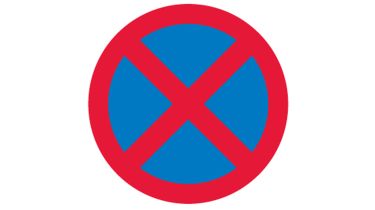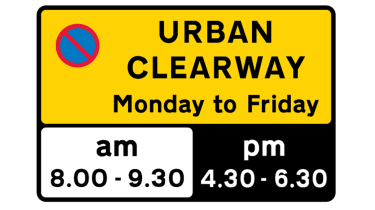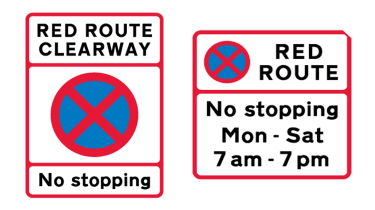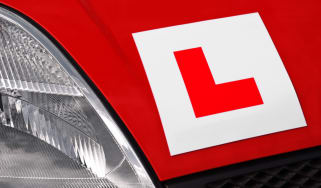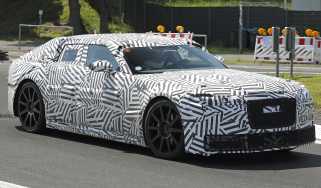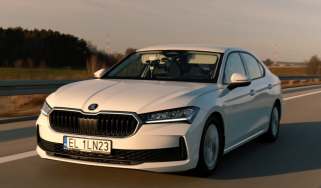What is a clearway? Urban clearways, clearways and red routes explained
If you’re unsure of the difference between a clearway, an urban clearway and a red route, you’ve come to the right place.
Our urban areas have a finite amount of road space and a growing number of people and vehicles to fit in it. This understandably creates traffic problems, delays and, often, friction between different groups of road users. The authorities have various tools at their disposal to try to keep everyone safe, happy and moving.
Among these measures are the clearway, the urban clearway and the red route. Each is slightly different but they are all basically bans on obstructing a particular stretch of road by stopping or parking your vehicle. Below, we’ll explain exactly what urban clearways, clearways and red routes are, how to identify them and how to stay on the right side of the law when you do.
What is a clearway?
In the simplest terms clearways are stretches of road where it is forbidden to stop your car for any reason at any time. They are denoted by the familiar, but often misunderstood, clearway sign - a circular sign showing a red cross on a blue background.
Clearway signs are positioned in pairs so that you get one at the beginning of a stretch of road that has been designated a clearway and one at the end of that stretch with the word ‘end’ added in black lettering on a white background under the main circular sign.
Any car that does stop on a clearway must be pulled completely off the main carriageway so that it does not obstruct traffic in any way.
What is an urban clearway?
Think of the urban clearway as a clearway with a few more ifs and buts built in and you won’t be too far wrong.
Urban Clearways are denoted by signs with a single red line diagonally across a blue background, but the signage is usually accompanied by extra information on the particular times that the urban clearway rules are in effect. At the end of the zone, there will be an ‘urban clearway end’ sign to tell you that the rules are no longer in force.
Typically, urban clearways are used to ease traffic flow in towns and cities during busy periods. So an urban clearway could be enforced on weekdays between 8am and 9.30am, then again between 4.30pm and 6.30pm, for example.
During the hours of enforcement for an urban clearway, you cannot stop or park your vehicle except briefly to pick-up or drop-off passengers. When the urban clearway is outside its hours of operation you can stop or park where the normal road markings allow. You will, however, often find that a pay and display parking system is in force as urban clearways are likely to be busy areas, such as high streets.
What is a red route?
If the urban clearway is a clearway with a bit more room for manoeuvre, the red route is a clearway with a bit less. On red routes, which are typically found in cities and often along major bus routes, you cannot stop or park your car at any time and, unlike a standard clearway, the rules extend to the verge or footpath as well as to the carriageway itself.
The only vehicles that can stop on a red route are licenced taxis or disabled blue badge holders, but they can only do so for the purpose of picking up or dropping off - there’s no parking allowed.
Red routes, or red route clearways to give them their proper name, are marked by rectangular ‘red route clearway’ signs at the beginning and end but also, crucially, by double red lines along the sides of the road.
There may be areas on red routes with single red lines that do allow for stopping during certain signposted times. Disabled badge holders do not receive special dispensation to park on single line red routes as they do on single yellow lines and must obey the same rules as everybody else.
Some red routes do, however, have special parking bays marked out with broken red or white lines that are designed to allow disabled parking or loading and unloading. Broken red lines tell you that the parking bay is available for part of the time that the red route is in force and broken white lines mean that the parking bay is available at all times that the red route rules apply.
Red routes are often more aggressively policed than other parking restrictions, with fines issued by CCTV cameras, traffic wardens and parking attendants. Fines are typically £100 to £130 with a discount for early payment, so it’s well worth being aware of the rules.
First Cars on Auto Express...
Everything you need to know about learning to drive, getting your driving licence and choosing your first car...
Learning to drive
Passing your driving test
- Driving theory test: everything you need to know
- Hazard perception test: what to expect and how to pass
- Driving test 'show me, tell me' quesions: hints and tips
- Practical driving test: how to pass
- Driving test pass rates explained
- Driving test aids product test
- History of the UK driving test
Getting your first car
- Best first cars for young drivers
- Cheapest cars to insure
- Cheaper car insurance for young drivers: our top tips
For all the latest car news, features, tips and advice, follow Auto Express on Twitter and like us on Facebook...
Find a car with the experts

